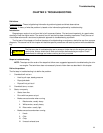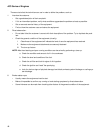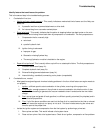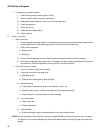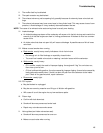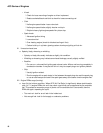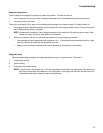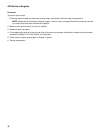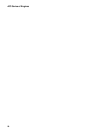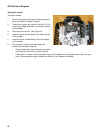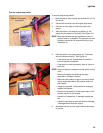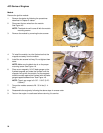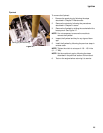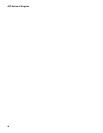
Troubleshooting
19
Compression testing
To perform a compression test:
NOTE: If the engine will run, start the engine and let it warm up first for a better reading.
1. Disconnect the high-tension lead from the spark plug
and ground it well away from the spark plug hole.
2. Remove the spark plug using a 5/8” spark plug
socket.
3. Pull the starter rope several times to purge any fuel
or oil from the combustion chamber.
NOTE: Air compresses readily, liquid does not. Liquid in
the combustion chamber will result in an artificially
high compression reading.
4. Install a compression gauge in the spark plug hole.
5. Confirm that the gauge is “zeroed”, then pull the
starter rope repeatedly, until the needle on the gauge
stops rising. See Figure 3.1.
6. Read the gauge.
NOTE: Most good quality compression gauge sets come with a 10mm adapter is needed to thread into the
spark plug hole. If an adapter is needed, a Matco service part # CT606 or a Mityvac 05505 Compres-
sion Tester Spark Plug Adapter can be used with most gauges.
NOTE: When checking compression on small displacement engines, use a compression gauge set with the
shortest available (or no) hose.
Interpreting compression readings:
Readings in psi Possible causes
<20
(1.4 Bar)
Most likely a stuck valve or too
tight of a valve lash, provided the
starter rope pulls with normal
effort.
20-90
(1.4 - 3 Bar)
Valve seat damage or piston ring
and/or cylinder wear.
90 - 125
(6.2 - 8.6 Bar)
Normal readings
>125
(>8.6 Bar)
Excessive valve lash, a partial
hydraulic lock, a bad cam or a
bad automatic compression
relief.
Figure 3.1
Gauge is zeroed



